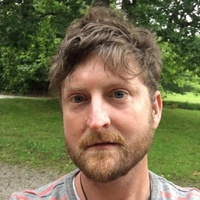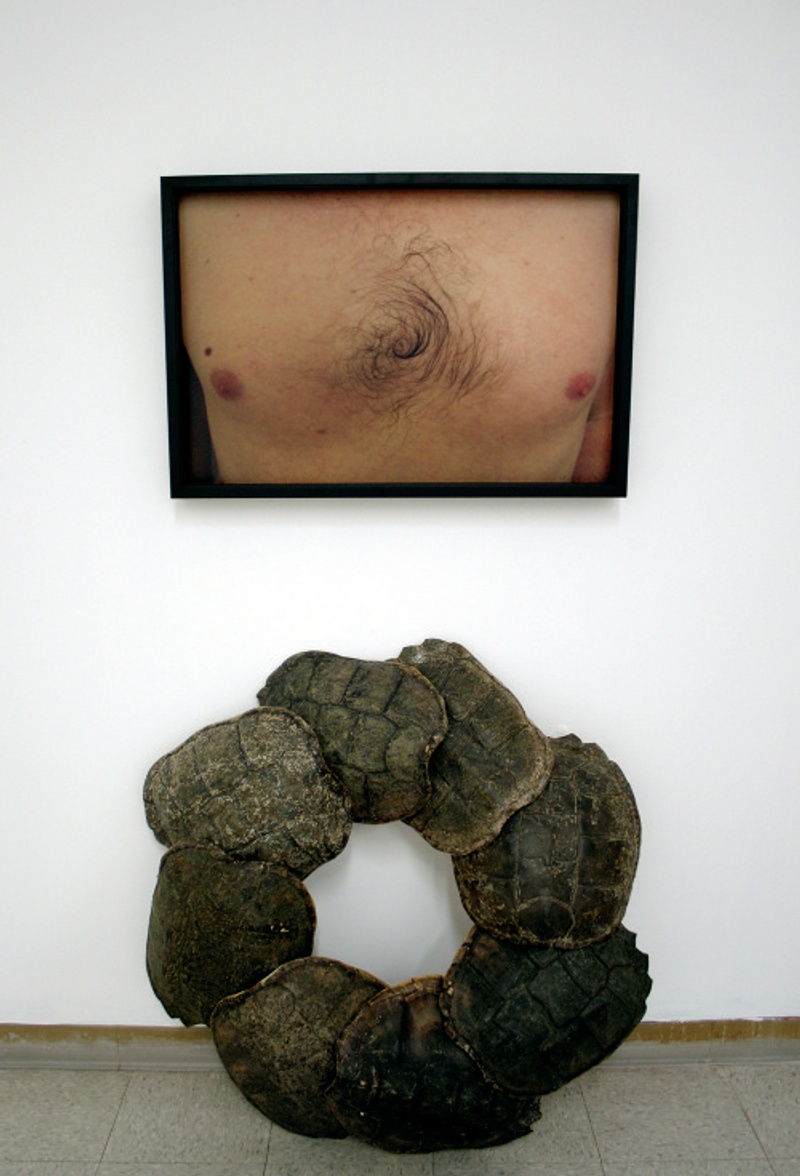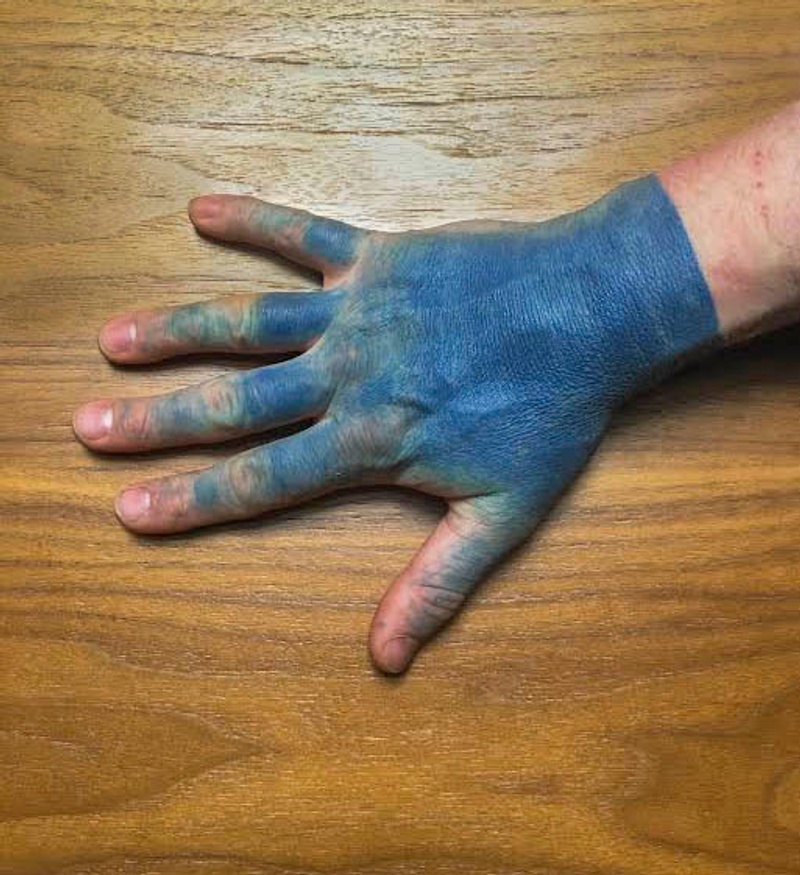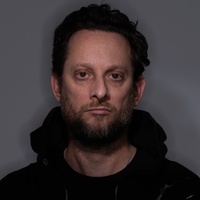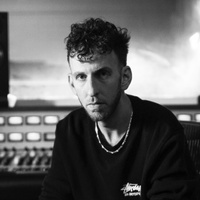As told to Katy Henriksen, 2279 words.
Tags: Art, Adversity, Business, Creative anxiety, Multi-tasking.
On the possibilities and challenges of being an artist in a small city
Artist, writer, and curator Mike Calway-Fagen on moving back to Tennessee, what it's like to operate a nonprofit art space in a small city, and why nature can often be the ultimate anti-anxiety medication.In your bio you talk about reality being a membrane, codified spaces, and ask the question, “How might a sculpture, video, photo, collage, or whatever stumble right along with the viewer, breaths held, eyes open?” So my first question is really along those lines—can you talk about this fluidity and what reality and perception mean to you?
The best way to answer that might be to acknowledge that one has a presence amongst the field of presences and that it’s never finished. It’s always unresolved and being in the world is also kind of a process of co-production, so your experiences are constantly rising up, or becoming, as you exist alongside or in collaboration with other people, your surroundings, animals, temperatures, atmospheres, pickles, and graphs.
It’s obviously very important to your art and why you are an artist. What drew you into these specific ideas?
I think fundamentally art is sort of off. Art produces, potentially, a kind of eeriness or awkwardness that distorts a normative presence. As a result it instantly draws a degree of vulnerability out of the witness or participant. In that notion it becomes a tool to re-envision one’s self as maybe not quite well put together.
What drew you to working in the medium of sculpture?
I think the direct connection to the tactile and the body—the corporeal nature of making. Until I went into education I was a bicycle mechanic, so there was a degree of wanting to put my hands on things to understand them so that knowledge wasn’t just a process of looking and cognition that exists above the neck, but also a process of fiddling and fidgeting and tactile exploration that doesn’t immediately incorporate language and that kind of distillation.
Can you go back to formative times as a sculptor and describe those moments?
There is an image of me that wound up in The New York Times when I was a little kid. I think it was a photo competition. My uncle took a photo of me holding a camera and I’m listening to the lens. It was a comical act, but also transgressive, too—to subvert the camera. Instead of it being the thing that captures what we see, it’s maybe something that may be more metaphysical than that—little box houses that one might have access to if you tried to listen to it and also a kind of naiveté that the world isn’t quite as conclusive as we sort of understand it to be as adults.
Your “Better Listeners” exhibit is about decentralizing consciousness and active listening. Can you elaborate?
I don’t really see them as individual per se, or autonomous. Everything doesn’t exist in the image or the object. There is a stillness or silence and even a kind of faith that I think you have to exercise in order to believe that there is more. For instance, there’s a piece called “Nunsum,”—which is a play on zero-sum game. The piece consists of rattlesnake venom permanently installed within the wall of the gallery.
So I excised a hole in the gallery wall and the venom is placed in a 19th-century apothecary glass and mounted on the inside of the wall against a stud. Then the plywood and drywall are subsequently replaced, patched, painted, and made to look as though nothing ever happened.
Nunsum, 2018 (permanent installation at the University of Arkansas)crotalus horridus (timber rattlesnake) venom, small antique glass bottle, hole cut in wall and venom-filled bottle mounted to interior stud, hole patched and painted, permanent installation
It accesses this very human question of fact and fiction. You don’t leave with a satisfying takeaway. Most everything requires a certain crossing of a threshold.
You’re instrumental in this new arts organization in Chattanooga, Tennessee, called Stove Works. Tell me more about it.
It’s always been a dream of mine to claw my way back to Tennessee. I’m now two hours away from my folks on the outskirts of Appalachia. It’s a 75,000-square-foot facility that houses a fully funded art residency, multiple gallery spaces—for which I am the director and curator—educational programming, and a classroom, an arts library and full shops.
It’s exciting to be there on the ground floor. That same notion of kind of co-production I talked about in relation to my work is also the reason I found myself as a writer, actually, and as a magazine editor and now also as a full-time curator, which I’ve also always done on the side. Now it’s just amazingly become a thing that allows me to fill my fridge with some food.
Why did you want to get back to Tennessee?
For a number of reasons. I think it is directly related to my own growth and understanding about political and cultural landscapes: whiteness, maleness, whatever might be considered a southern ethos, and what that’s derived from. I wanted to be a part of that complexity, a part of that re-examination of what amounts to a kind of white supremacy. Everything is underpinned and predated by a white supremacist perspective and this perspective was perpetuated by my participation. I felt a responsibility to tackle it head on outwardly and inwardly.
On a more individual level, the landscape that is Tennessee is something I feel particularly drawn to, that landscape being what everyone might consider natural: the creeks, the mountains, the trees, the critters. It’s something I’m drawn to. And being a part of the developing voice and perspective that contemporary art has the capacity to elicit and inspire is also a major component.
Describe the challenges of being in that landscape and the opportunities that are there that might not be available in a bigger city?
I’m in Chattanooga, which I think is fundamentally different than other places in Tennessee. It has issues that, I think, are specific to the city and then issues that I think are dealt with on a national or even international scale, like the big disparity in wealth, in property ownership and cost of living. Moving here I actually thought I was moving to relatively inexpensive place and found instead a place that is virtually unaffordable from a renter’s perspective.
The lack of codified opportunities and codified creative spaces creates a lot of opportunities for a certain informal intervention and resourcefulness. Maybe that’s just an optimist’s view of something that is, in spite of lacking, in spite of the negative—being able to spin a major absence of something into a potential space that could be generative.
It’s a re-envisioning of economizing my practice and sense of opportunity. Simple things like being able to walk around on railroad tracks or something… it’s a real pleasurable experience that I’m not sure I’d have access to in a larger city. But maybe things feel a little less regulated in terms of public space. By the same token that’s probably also my privilege.
I also think there’s a desire here on the part of a select number of people who want to see places like Chattanooga have a challenging and vibrant art culture. I think to this point, the bar for the most part is set fairly low. I think a lot of that is a fundamental problem of Tennessee public education. I didn’t know a single contemporary artist until I was 23, and that seems like a real problem. The capital of this state doesn’t have a contemporary art center or museum.
we will never really know,2010 framed digital print, snapping turtle shells, fiberglass
Do you remember—back when you were 23—what contemporary art you first learned about?
I have two anecdotes, actually. One would be visiting my aunt in New York who had a friend who was a curator and they took me to the Guggenheim to see Matthew Barney’s Cremaster Cycle, I think it was number four in the showing at the Guggenheim. I remember walking all the way up the spiral with the plan to walk you know down the spiral looking at all the work. I got maybe 200 yards into the exhibition before I threw up my hands and walked out of the museum and sat down in a huff on the sidewalk. Later on I told my aunt and her curator friend that obviously this wasn’t art and expressed my anger and dissatisfaction.
Fast forward a few years and I was back in New York at MoMA and had the opportunity to witness a Janet Cardiff installation, titled “The Forty Part Motet”, which was true to Janet Cardiff’s practice as a sound installation, and I found myself weeping.
Has your opinion on Matthew Barney changed at all?
The thing that we aren’t taught typically is nuance and subtlety in complexity. So sure, my opinion on Matthew Barney has changed, but liking it and not liking it has drifted to like a last consideration and my perspective now hinges on a million points of contact as opposed to some binary.
How do you balance being an artist and being a curator and then also editing?
It’s been really difficult and, at times, can be a pretty thankless network of endeavors and definitely one in which you’re not properly compensated. Those overlapping pursuits really amount to, you know, there has to be a hole and you have to be seeking something or maybe be a sociopath in order to pursue this series of things. It’s been a negotiation.
I saw a post you made on Instagram where you were talking about trying to be an artist, but not being able to afford the studio spaces in the place where you’re trying to be an artist.
It’s totally frustrating to be working as a professional in an industry where studio prices in Tennessee are more expensive than a studio in Los Angeles. I’ve actually now found a studio, but in a building that has no guarantee that it will be there next month. Also, they aren’t developed studios—they’re just rooms in a church. It just feels like a thing that cities often times purport to be—a bastion of creativity where they tout their artists’ communities on paper—but when the rubber meets the road they’re not actually doing those things. I mean for a studio to cost three dollars a square foot in Chattanooga Tennessee, I really cannot see the cost benefit there. I cannot see the value or how one might reconcile charging those kinds of prices when you know that the state of Tennessee has very little in the way of state funding for art.
The Gargantuan,2017-eventual death my hand, lapis lazuli tinted tattoo ink, loved ones, time
Are you committed to being in Tennessee or do you ever think you’ll need to find a place that’s more supportive for what you are trying to do?
I often times think “let’s just pack it in.” If anything, just so I don’t have to keep checking my blood pressure. This is a very real thing. This is a very stressful existence. This is the environment, this is the landscape of Tennessee. It’s pretty awful. That’s a counterpoint to working for Stoveworks and developing a nonprofit. I’m existing on both sides of the curtain.
Can you articulate why you’ve chosen to stick it out in this landscape that you find yourself in?
I don’t know, failing? I’m not sure. I think I’ve come to realize I’m afraid of New York, but it’s a healthy fear founded in ethical standards. I do really appreciate the landscape here in Tennessee and draw solace from the fact that I now have re-found an interest in being outside in the last few years. That, I think in a lot of ways has been my anti-anxiety medication, albeit not one I get to take that often. I also don’t mean to seem like it’s all doom and gloom. I feel very lucky. I feel like that weird contradictory place that people in creative fields often have to inhabit is one of loving what they do and also feeling like it’s a kind of self-annihilation. It’s very masochistic and I’m saying that with all seriousness.
When I think about being dedicated to Northwest Arkansas and sticking it out in a place that’s kind of like the wild wild west of the arts, I feel like there’s this space that exists where we can actually effect more change than if we were in a bigger place that has a bigger infrastructure of institutions to navigate. Here I can try and push through a kind of change, something that I’m hoping to build myself.
Totally. I think that’s what drew me away from academia and teaching. I’d been teaching full-time for four plus years. I think the bureaucracy of the institution really polluted any kind of impact I might have had. Being in Tennessee and being a curator for a burgeoning nonprofit feels as though you’re able to touch something and move it, as opposed to signing a document that three years from now might eventually move the thing. It provides a direct action and a kind of urgency I can’t escape, which influences my writing and my studio practice and my curating.
now here, nowhere,2016 performance installation with grapefruit, video (The Remainder), mini-fridge, collage, wood, wheels
Mike Calway-Fagen Recommends:
5 Things
-questioning the nature of value
-overlapping engagement ring tattoos
-sewing a sleeping bag
-silence
-thinking about mom dying

